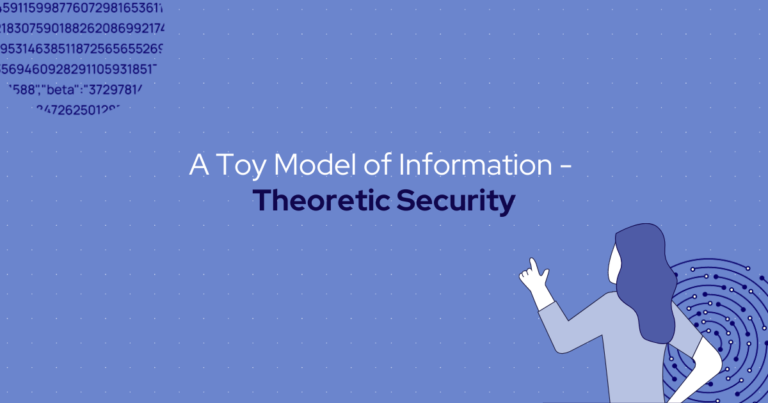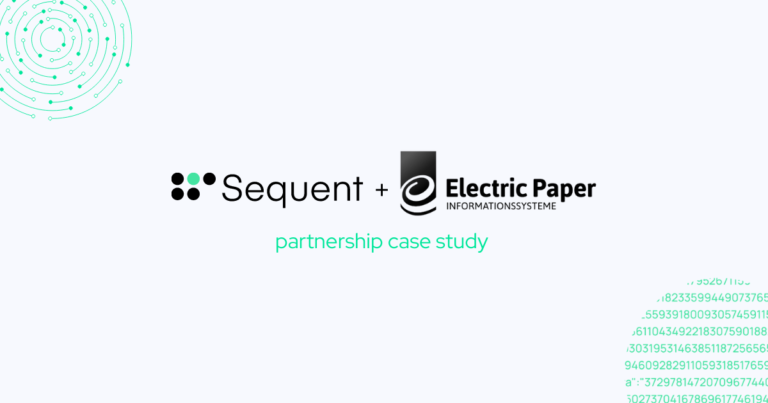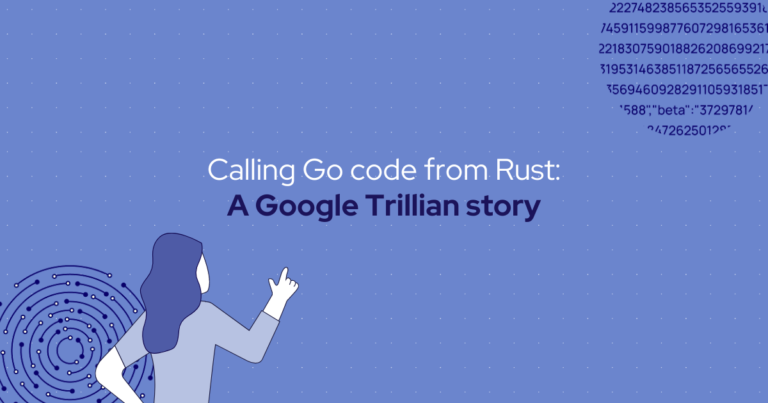Blockchains and Bulletin Boards

Bulletin boards play a vital role in ensuring the integrity and verifiability of cryptographically secure voting systems. Acting as a centralized storage system, the bulletin board serves as a transparent platform where all public information related to the election is openly published, enabling anyone to scrutinise, assess, and audit the process. Go Back Blog Add […]
Degree of Privacy in Voting

This article demonstrates the natural extension of Diaz’s 2002 degree of anonymity model to voting scenarios. The outcome is straightforward but holds potential value for intricate cases like weighted voting, where privacy concerns surpass the conventional “bisimilarity-under-swapping” definition outlined by Delaune in 2009. These concerns arise from the possibility of information leakage through election results, […]
A Toy Model of Information – Theoretic Security

In a previous post, we discussed different types of uncertainty due to limited information or computations as the basis for cryptography. A Caesar cipher example demonstrated how an adversary could have all the information to reveal a secret if the relationship between the message space, key space, and ciphertext satisfies the following: Go Back Blog Add a header to […]
Anonymity, Pseudonymity and E-participation

In this article, we will examine two papers related to the topic of anonymity in e-participation: Ruesch & Märker 2012 – “Making the Case for Anonymity in E-Participation” and Moore 2016 – “Anonymity, Pseudonymity and Deliberation: Why Not Everything Should be Connected.” Our focus is on the concept that there may be an optimal solution […]
A bag of Dev Container Tricks

Nowadays, threre are a lot of tools, libraries, IDEs & plugins that are supposed to make the life of developers easier. But this also adds complexity. Moreover, it may make each developer’s development environment a bit different, depending on how the developer configured these tools. Go Back Blog Add a header to begin generating the […]
Homomorphic vs Mixnet Based E-voting

Although proposals have been made using other techniques, most common modern approaches to constructing secure voting systems can be divided into two categories: those based on homomorphic tallying (shorthand “homomorphic systems”) and those based on verifiable mixnets (shortand “mixnet systems”). Most systems, both prototypes in academia as well as production systems in industry, use one […]
Bringing Sequent’s End-To-End Verifiable Voting Solution to the German Market

Based in Lueneburg, Germany, Electric Paper Informations Systeme (EPI) is a company that provides impactful solutions for the digitalization of the workplace and has been working in the field of tension between “people, paper and processes”. For over 20 years, they have contributed to the efficient conduct of internal elections across departmental and organizational boundaries. […]
Calling Go Code From Rust: A Google Trillian Story

Although we have not officially announced any specific plan, it’s not a secret that at Sequent we’re developing our 2nd generation secure voting platform, because we work out there in the open. Go Back Blog Add a header to begin generating the table of contents The bulletin board and its requirements Although we have not officially […]
A Universal Approach to Election Verification: An Opportunity for Increased Trust in Elections

A voting system is termed end-to-end verifiable (E2EVV) if it provides procedures to check that all steps of the voting process are executed correctly. These procedures include both human executed as well as automated software checks. Because the verifiability of end-to-end verifiable voting systems is based on mathematical proofs, the corresponding checks take the form […]
E-Voting Wasm Cryptography

The Sequent Voting Platform is an open-source E2EV internet voting system currently used in private organisations and non-legally binding elections of public organisations. The system employs standard cryptographic techniques following in the steps of well-established voting schemes proposed in the academic literature. We demo core cryptographic components that are being developed for the next generation […]